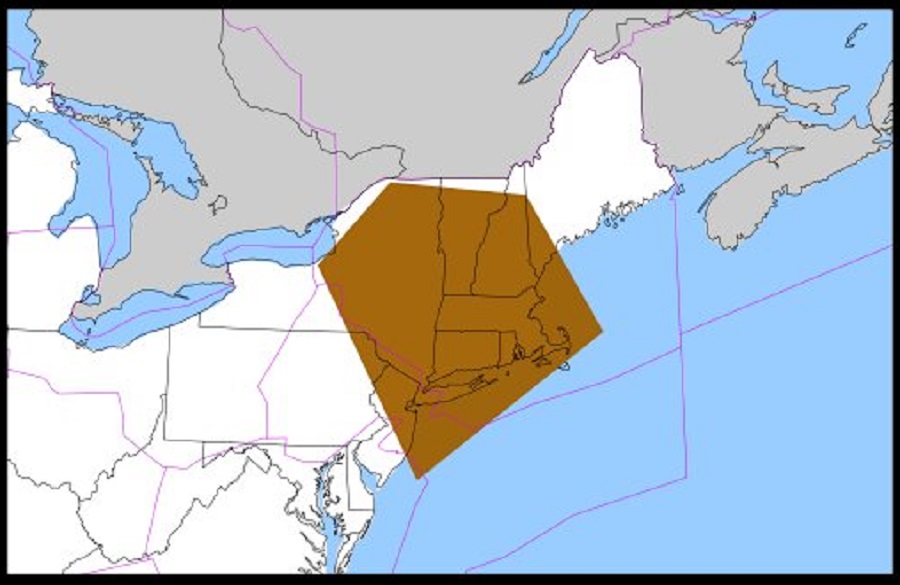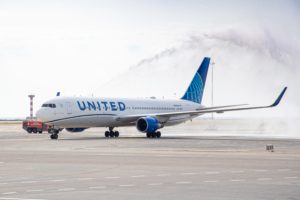
The Bomb Cyclone continues to impact airports in the Northeast today; the National Weather Service’s Aviation Weather Center (AWC) has just issued a Severe Turbulence alert for a large part of the northeast including areas over New York City’s and Boston’s airports. Specifically, SIGMET VICTOR 3 has been issued through at least 1150Z today.
The AWC issued an alert flagging the presence of severe turbulence in the air over much of New Jersey, eastern New York, all of Connecticut, Rhode Island, and Massachusetts’s, most of Vermont and New Hampshire, and southern parts of Maine. Airports impacted by this alert include New Jersey’s Newark Liberty International Airport (EWR), New York City’s LaGuardia (LGA) and JFK Airports (JFK), Providence airport in Rhode Island (PVD), and Boston’s Logan International Airport (BOS). The nation’s three largest airlines, American Airlines, Delta Airlines, and United Airlines all have a significant presence in this market with many of their flights impacted.

According to the AWC, there is occasional severe turbulence from the surface up to about 14,000 feet and this is due to low level winds, strong up and down drafts, and low level wind shear. Wind shear is a difference in wind speed and/or direction over a very short distance in the atmosphere. Airline pilots generally regard significant wind shear to be a horizontal change in airspeed of 30 knots (15 m/s or 34 mph) for light aircraft and 45 knots (23 m/s or 51 mph) for traditional airliners flying at flight altitude.
Flying through turbulence can be dangerous, with injuries encounter on two U.S. airline flights this week.
On Monday, a United Airlines 767 jet encountered severe turbulence on its flight to Houston, Texas. Due to that encounter with rough air, 3 crew members and 2 passengers had to be rushed to the hospital for care upon landing.

On Sunday, Hawaiian Airlines Flight 35 flew through severe turbulence before landing at Honolulu International Airport after originating in Phoenix, Arizona. A Mass Casualty Emergency Event was declared, with dozens of passengers needing care for injuries sustained in the violent ride. Officials with Honolulu Emergency Medical Services and American Medical Response say the flight encountered the extreme turbulence about 30 minutes prior to landing; they treated 36 patients at the airport. 20 patients, ranging from a 14-month old toddler to older adults, were transported to hospitals near the airport, some with serious injuries.
Known as a SIGMET, short for Significant Meteorological Information, the severe weather advisory issued by the AWC contains weather-related information concerning the safety of all aircraft passing through a specific zone. Sometimes AIRMETs are issued too; an AIRMET consists of turbulence, visibility, and icing-related warnings that are less severe than those in a SIGMET.